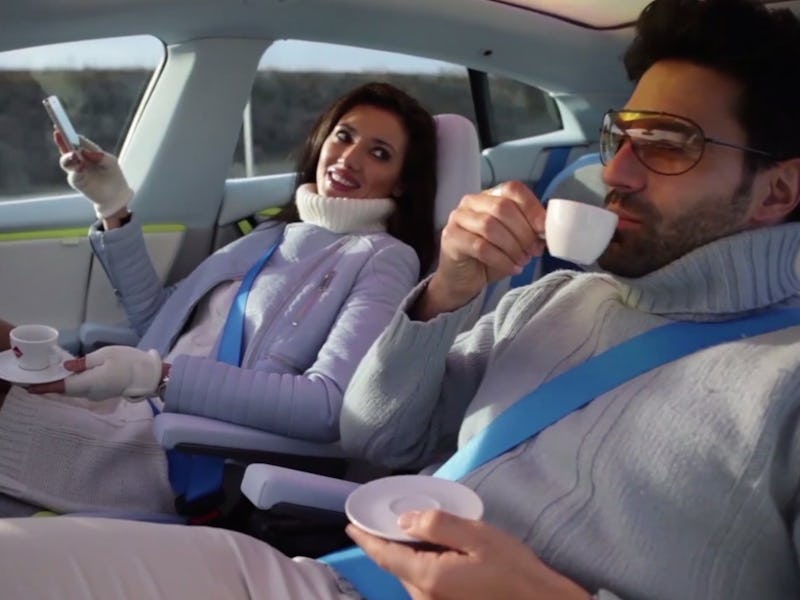Drive-Thrus Should Have Mixed Feelings About Driverless Cars
Eating our automated hearts out.

Google’s driverless car dream is radical. Forget a steering wheel that you take your hands off from time to time: We’re talking about push-botton vehicles. Without having to drive, passengers will be able to do whatever else they want. If Maslow’s Hierarchy of Needs tells us anything, it’s that there will be ketchup stains. People are gonna eat on the road — even more than they do now.
On first glance, the driverless car looks like a boon to the drive-thru. Passengers that used to be drivers will be able to give that Whopper the undivided attention it deserves! True and actually doubly tru because the quick-service restaurant industry is looking to streamline its take-out process with apps and pre-ordering. It was a warning shot when the average time waiting for food increased from 219 seconds in 2014 to 230 seconds in 2015, but the industry is on it and hands free driving could mean orders streaming in before drivers. Fast could get way faster.
Though overall car volume has dipped at fast food joints, the “ethnic” food sector and breakfast is rocketing up. Plus, in places like Boise, Idaho, a fondness for old-school aesthetic and hipster mustachedom have precipitated a vintage drive-thru boom. Starbucks’ foray into the drive-by cup of joe has become a big part of its business, as it’s now investing in video screens and other ways to make the experience slicker. Having shown a willingness to innovate to keep the drive-thru fresh and vital, integration with the presumably more-efficient-than-thou automated car would see line times dip and make eating on the go even easier.
But speed could also be the franchise owners’ Waterloo.
Here’s the catch: As driverless cars lubricate the future of driving, they also make delivery speedier. Right now, restaurants like McDonald’s and Domino’s aren’t necessarily direct competitors in the United States. In Asia, that’s something of a different story: Wendy’s delivers in India; KFC delivers in China and the Philippines.
It’s not really an issue of laziness or agoraphobia, it’s that either traffic isn’t great, or the petroleum-fueled American wanderlust isn’t there. This is an argument about driverless cars but, more importantly, about driving itself. Thanks to some combination of telecommuting, shifting technological preferences, expense, improved public transportation, and maybe even environmentalism, people just aren’t driving that much. Delivery and walking are emerging as norms.
Some autonomous car fans envision the automotive utopia of a shared driverless vehicle or fleet — why own a whole car, when you can divvy up the cost by sharing when you’re not using it? (It’s not like it’s going to get lost somewhere, right?) For the food industry, this starts to look like a commercially-owned fleet or a third-party service that picks up food from various kitchens (there are startup precursors to this now) and brings it to your door.
If there’s a correlation between high internet usage and lower licence rates, that doesn’t suggest we’ll be flocking to drive-thrus once the driver’s test dies. It might mean we’ll have driverless cars flocking our way, schlepping us piping hot ‘zas with algorithmic precision.